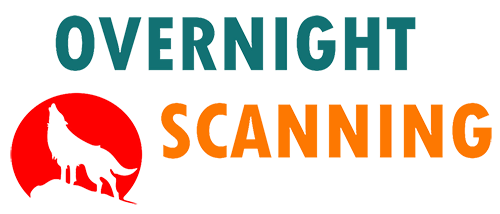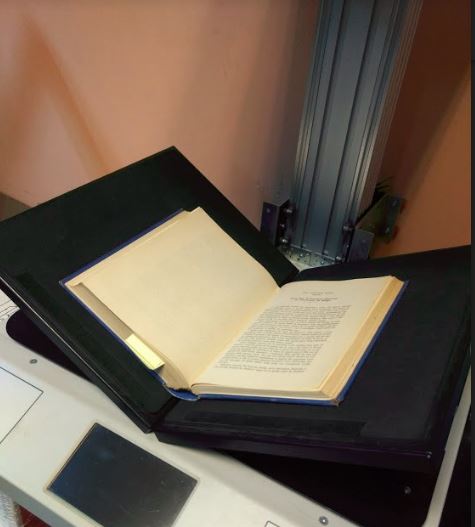The book scanning services review we are showing today is an evaluation of the OVS book scanning services. The article will present the reasons for such a review, but also the upsides and the downsides of the service. We have also included the technical specifications of the service.
The reason for a book scanning services review ?
We decided to review the book scanning services we offer because it helps customers find new ideas. Because we call them book scanning services, people think we only scan actual books. In reality, we focus on just about any bound document out there. While most think about a library, try and think about archives. Think conversion of information, not necesarilly ebooks. Most larger projects we had, were all about converting paper information to digital information. It’s not only ebooks or literature.
Technical specifications and characteristics of the service
The 5 main technical specifications you should look for when scanning books are :
- The type of documents
- Maximum Size and page formats
- Destructive or Non Destructive Scanning
- The file formats offered
- OCR accuracy and properties
Type of bound documents we scan:
- Standard books – These are mostly literature, history or just about any standard book you can think about.
- Manuscripts – We get quite a decent amount of manuscripts. Some of them are for redistribution some for the creation of ebooks.
- Personal memories – These are bound documents of customers who write their memories or journals.
- Yearbooks – We had quite a decent amount of yearbooks we have scanned during the last years
- Archival Documents – As you probably know, most archives bound their documents. When they need scanning they have to be scanned just like any book.
- Folders or binders – These can be financial statements, contracts or other type of documents found in binders or in folders.
What size, quality and page formats
We can scan documents that open to an A2 format. That is more or less 420mm by 594mm. On special requests, we can also scan newspapers. For resolution, we usually scan at 300dpi. Of course, we are able to scan more or less, but it will also affect the price levels. Our workflow is set for 300dpi and 99% of the projects for scanning in general are at this resolution. For page formats, we have set our workflow so that we can process both ISO sizes and non standard ones. We can also process documents with ICC profiles. This way we try to meet color requirements as much as possible. These scanning services are set for archival purposes.
Non Destructive or Destructive book scanning services
Yes, we offer 2 types of services. On our website you fill find reviews for book scanning services from other customers. They have used both our destructive and the non destructive services. The first one, the non destructive service, generaly means we make the scanning without cutting the book. That means we scan material without affecting its integrity. The document remains in the same state as it was initialy. No harm is done, and it returned to the customer in its original state. This is very good for archival material, manuscripts or one of editions of bound documents.
The destructive method presumes we cut the book prior to scanning. We can return it or we can recycle it. Some customers need returning for proofing purposes. For example, some of our customers are publishers or book writers. They want to take their book online. They have physical copies of the same title. Customers send one to us, we cut it, scan it and then we recycle the material. This way we can offer them a better price for scanning. They can also make ebooks of their books and make the material available online. Depending on what is required, customers can choose one of the two types of work.
You can check this link for more information on such aspects.
File formats offered for book scanning services
When it comes to file formats we have different requests. Most requests are for Multipage PDF, with or without OCR. We will cover the OCR aspects in the next paragraph. Coming back to file formats we can also provide other formats. Some customers want an ebook or epub file directly. We had other customers trying the audio book feature. Or, depending on advanced content management systems, some want special Tiff or Jpeg files. Advanced file types, such as XML or CSV are also available. Usually such requests are for advanced ECM systems. We combine Tiff or Jpeg files, while using a text layer and image layer.
Optical Character Recognition – OCR
One of the most important things when scanning books is the OCR. This process converts image based scans to text. It provides advanced features to users, such as browsing or searching text. Nowadays we work a lot with keywords. The OCR process helps us achieve this with books that were scanned. This is the foundation of building digital files from scans. The better the OCR quality the better the final results. To have good OCR you also need a clear scan. That means after scanning you have to process images. Without this, the accuracy can sometimes be less than 50%, which might prove too low in a lot of cases.
Quality of the final product
As mentioned in the other paragraph, we pride ourselves on delivering high quality scanning. The 3 steps for a good book scanning service are scanning, image processing and OCR. The better the scanning, the less image processing needed. The less image processing needed, the better the general quality of the output. And the better the first two combined, the higher the accuracy of the OCR process.
Files are delivered via FTP or through specialized providers. We use WETRANSFER to transfer most of the work we do. We had customers in the past who required upload to their own FTP. Other customers preffer direct upload to one of their ECM or Document Management platforms. For this, we can use special XML or CSV files, to assist the upload and retrieval of scans. Of course, further adjustments are possible and our team is open to converting material for your specific needs.
Try our sample service
We can always test sample pages for you. If you are not sure of the quality or product level, we recommend you try our sample service. It will cost you nothing. We will include samples of scans for free. Generally, we scan around 10-15 pages, which we convert and process and then we supply to you the end result. We think this approach is beneficial for everyone involved. Customers can directly evaluate what they will receive. They do this risk-free. And we also show what is possible with our service.
Conclusions of our review
- Book scanning services are available from different vendors. Most will sample their work. Try it before ordering.
- There are various types of services for different budgets. Your work might not cost as much as you think.
- Prices have gone down significantly in the last years. This makes it easier to scan more for less.
- Make sure you let the vendor know what you need the scans for. He will use the optimal method of scanning.
- Think about quality. It will help you achieve better OCR results and an overall better job.







